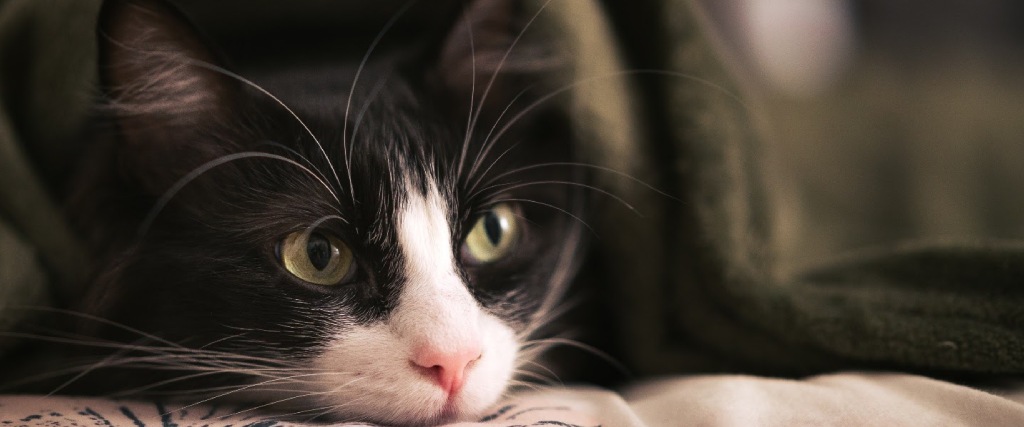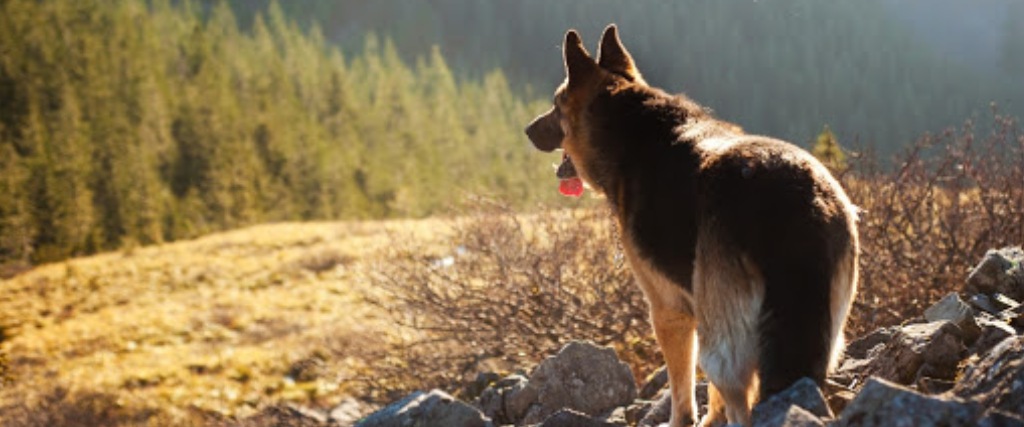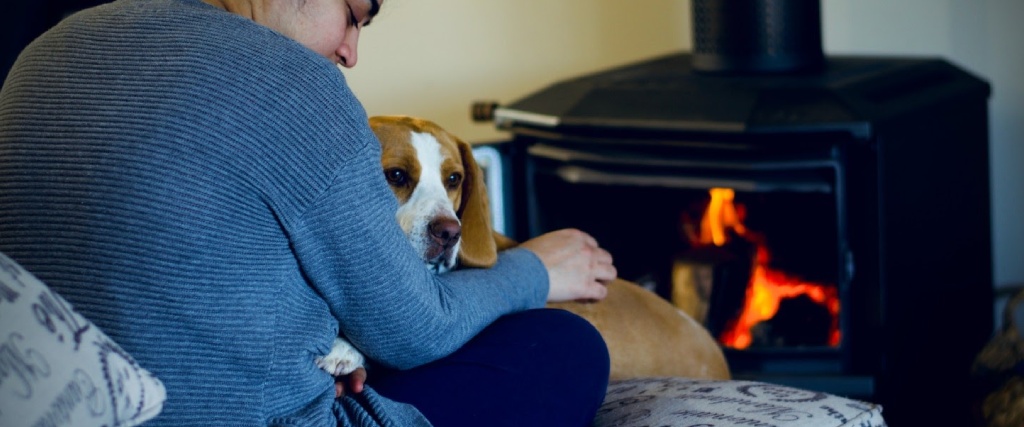We’re now mid-Winter, and as the temperatures get colder it is important to remember that our pets are also struggling with the cold. When your cat or dog struggles with the cold there are a few important things you need to do to keep them safe, warm, healthy and happy. We’ve put together a few winter pet safety tips to help with winter care for your furry friends.
Know when your pet is cold
The first step in caring for your pet during winter is figuring out when your pet is cold. Every pet has a different reaction to cold, here we will focus specifically on dogs and cats.
How to tell if your dog is too cold
If your dog is cold, they will try to communicate that feeling with you. Be sure to look out for these signs when temperatures start to drop:
- Shaking or shivering
- Hunched posture with a tucked tail
- Whining or barking
- Change in behaviour, like seeming anxious or uncomfortable
- Reluctance to keep walking or trying to turn around
- Seeking places for shelter
- Lifting their paws off the ground
During winter if your dog does any of the above, they are probably getting cold and you should make an effort to make sure that they are warm enough. If your dog is very cold they may develop mild hypothermia. The following signs may indicate that your dog is more than just a little cold:
- Tiredness
- Shivering
- Paleness of the skin
- Muscle stiffness
- Low blood pressure
- Shallow breathing
How to tell if your cat is too cold
If your cat is too cold it should be quite easy to tell. They will adopt certain behaviours and there will be certain signs you should look out for to know they are cold, such as:
- Cold extremities – if your cat’s ears, paws or the tip of their tail feels cool, your cat is probably uncomfortably cold
- Sleeping on or close to direct heat sources
- Curling into a ball
- Constant cuddling
If your cat is very cold, they might even have mild hypothermia. The signs of hypothermia in cats may also include:
- Weakness
- Shivering
- Lack of mental alertness
- Muscle stiffness
- Low blood pressure
- Unresponsive, stupor-like state
- Slow, shallow breathing
Cats get cold easily, if you notice any of the above signs of cold make sure to provide warm spaces for them.
What to do if you pet does get hypothermia
If you do find that your pet is suffering from hypothermia, you will need to act immediately. Mild hypothermia can be reversed by getting your pet to a warm environment and wrapping them in a blanket until the shivering stops. You can also use hot water bottles (remember to not fill them with boiling water!) around your pet as an extra heat source that is safe, however do not use heating pads as those can easily burn your pet’s skin. Once your pet is warm again you should take them to the vet to monitor them or to see if they need further treatment. If your pet has suffered from severe hypothermia they will need immediate veterinary intervention.

Preparing for winter
Your cat or dog getting cold during winter is almost a guarantee, so while it is good to know when they are cold, you should not wait until that point but rather be prepared for winter before the cold arrives. Here is what you can do to keep them comfortable.
Set up a warm bed
During winter make sure to set up an extra warm bed for your pet. Add a blanket or two, and put it in a warm part of the house, away from draughts. This will provide a safe space that your furry friends can go to cuddle up and stay warm.
Marginally increase how much food they eat
As you get more hungry during winter, so do your pets. You can marginally increase the amount of food they eat. This will help make sure they are full, while also bulking up their bodies and coats giving them extra warmth to withstand the cold better.
Screen fireplaces and heaters
If you have a fireplace or heater in your home, odds are that is where your pets are most likely to go. While a fire or heater provides great warmth for your pets, it also presents potential dangers of burning. Make sure to provide a barrier in front of your fireplace and that your chimney is up to code to help your pet lie in front safely.
Buy dog clothes
When preparing for winter you should consider making or buying warm clothing for your dog. If you have a smaller dog or a dog with a thin coat of fur, this will give them extra comfort during the cold months. Dog jackets and coats will also be helpful when your dog needs to go for a walk and it is cold outside.
Buy a litter box
While you are preparing for a cold and wet winter, having a litter box for your cat (or dog) can be useful. This will help make sure that they don’t have to go outside unnecessarily. It is especially helpful if you are living somewhere, where it can rain for days on end.

Keeping your pet safe during winter
Once you have prepared for winter, here is what you should keep doing during winter to keep your pet safe.
Keep your pets inside
During the night and early mornings your pet will be the most cold. Make sure that you set up a warm bed inside and that they are staying warm. We believe that pets should always sleep inside but during winter you need to make extra sure they are always inside to keep them safe from the cold. When the sun is out you can let them out to play and go for walks. If your pet does end up outside in the rain remember to dry them off well when they come back inside so they can warm up again quickly.
Fewer baths
During winter you are going to want to make sure that you bath your pet (specifically dogs) as little as possible. The reason for this is because washing your dog too often can result in the removal of essential oils that will increase the chance of their skin becoming dry and flaky. This can make them more uncomfortable during an already uncomfortable season. A number of vets argue that bathing is unnecessary unless your dog is visibly dirty during winter. If you do need to bathe your pet, rather use a moisturising or medicated shampoo, or even the waterless spray kind that only requires a good towel rubbing afterwards.
Take your pet for a check-up
You should be taking your pets for regular check-ups, and the change of season is a great reminder for this. Additionally, winter brings up certain conditions that your pet may have so it is a great time to make sure they have wellness check-ups. For example, if your pet struggles with arthritis, this may flare up during winter and a vet will be able to advise you on a chronic care treatment plan. During check-ups, the vet may pick up other potential issues like heart murmurs or dental disease. The earlier any condition is spotted, the earlier treatment and management can be done to keep your furry friend safe.
Taking your dog for walks
During winter you will not want to stop your dog from exercising as it will help them keep healthy and warm. However, you will need to take a few more precautions than in summer. Here is what you should do when going for a walk with your dog during winter:
- Try walking when it is warm – Sunny days are the ideal time to walk your dog, if you are able to go for a walk at these times.
- Wear reflective gear – Unfortunately, for most of us we can only take our dogs for walks in the early morning or in the evening. As the sun goes down earlier during winter this will mean that you might be walking in the dark. To keep yourself and your pet safe, make sure you and your pet can be seen by wearing reflective gear.
- Put a jersey or jacket on your smaller/shorthaired dogs – If you have a smaller dog they still need to go for walks but they are just going to be extra cold. A jersey can provide them with extra warmth so that they are comfortable on their walk.
Work on car safety
Your car is one of the important things to keep an eye on during winter. If you have cats your car bonnet is something you need to check regularly. Make sure to check the bonnet before driving, your cat may have curled up by the engine to keep warm. Keep them safe by keeping them out of your engine. If you have to take your pet out with you, don’t leave them in the car unattended for long. Much like a car can act like an oven in summer, in winter it can act like a fridge. Leaving your pet in a cold car could result in them getting too cold and uncomfortable. Only take your pet in the car if you absolutely have to, otherwise, give them a warm spot at home when you go out.
Pay special attention to your older and younger pets
During winter you should make sure to pay attention to your older and younger pets. Old and young pets, unfortunately, just get colder than pets that are in their prime. Some extra precautions you can take for older cats and dogs:
- Ensure they sleep inside – We’ve mentioned this before, but it is extra important for older pets to provide a warm and comfortable indoor space for them.
- Winter clothing – If your dog is older you should make sure they have a coat for winter and possibly consider getting them boots for when they go outside – the ground gets cold and wet especially when it is frosty. This will help keep them warm at all times, protect their paw pads and make going outside easier for them.
- Extra and accessible litter trays – If your cat (or dog) is getting older you should make sure that they have extra litter trays that are easy to access in warm spaces.
- Create an accessible indoor play space – creating a warm space with toys will help keep older pets happy, stimulated, and healthy while they stay inside.
For your puppies and kittens, the same practices will help but you can also pay extra attention to keeping them indoors and training them appropriately during winter. If you find them wet at any point, make sure to dry them immediately, so that they can get warm. You can also use a hot water bottle to warm up your young pets. Wrap it up in a big towel and allow your young pets to lie next to it or on it, with access to moving away from the bottle if they get too hot. The principles of keeping your older and younger pets safe during winter are similar to keeping other pets safe, however, extra attention and care is needed, just as with older and younger humans. Older and younger pets are simply more vulnerable and need your attention to keep them safe.

Get Pet Insurance for Winter
The last thing you should do to keep your pet safe during winter is to make sure that they are insured. This can help you more easily take them for their checkups, manage any chronic winter ailments,and ensure that if anything goes wrong during winter you can take them to the vet without stressing about the costs. If you are looking to insure your pet, we have a variety of plans for any pet’s needs, and all ages. With MediPet Lite, it’s never too late to get pet insurance!
Medipet Animal Health Insurance Brokers (Pty) Ltd (MediPet) (FSP Licence No: 15491) is underwritten by Renasa licensed non-life insurer & FSP.


